Aboriginal readers are advised that this article/issue contains the names and images of individuals now deceased.
I was looking through the Pacific section in Parson’s Bookshop near the art gallery in Auckland when I came across a group of small thinnish volumes all with similar titles: String Figures of the Tuamotos, Tikopia String Figures, String Figures from Pukapuka. It was December 1999, and I was visiting Auckland for a conference. All of these books had a similar format. The main body consisted of illustrations of different string figure designs accompanied by the instructions for making them. The brief introductions gave some contextual information on the making of these collections of repertoire, but there was no further analysis or explanation. These were specialist publications, the purpose and significance of which was not clear to me. They were not inviting a general readership.
I had not come across string figures before. I never played the game commonly referred to as “cat’s cradle” as a child. This was something completely new to me. I was an art historian by training and trade, and yet here was a form of visual communication I knew absolutely nothing about. Not only that, but surrounding it was a developed field of study—one of the publications was in a velvety dark green card cover, an occasional paper of the Royal Anthropological Institute of Great Britain and Ireland. Esoteric, occasional, obscure, this was the “academic exotic”—Pacific Islands and the RAI, blue lagoons and marbled end papers. I didn’t allow myself to buy those books then and there, for what might be just another passing curiosity. However, returning again in 2003, and finding them still on the shelf as I had hoped, I did purchase them then. The curiosity had stuck.
String figures are patterns or designs constructed with a single continuous loop of string, “by the co-ordinated movements of the fingers of both hands, assisted by the teeth, neck, elbows, knees and toes when necessary”(McCarthy). All cultures at some point in their history probably made string figures. The Feminist historian/archaeologist Elizabeth Barber has argued that the invention of string technology may have been a catalyst for the movement of modern humans out of Africa. Arguably, it would have been an essential part of the tool kit of those voyagers who first travelled to Australia some 45–60,000 years ago. They would not have been able to do without it: “to tie things up—to catch, to hold, to carry” (Barber). It is generally presumed that in cultures in which string was an important technology in general use, there would have been string figures.
- Wangurra/Bandicoot, made by Ngarrawu Mununggur, 1948. E.83667, Cultural Collections and Community Engagement, Australian Museum
- Ngarrawu Mununggur making Bandicoot, 7 September 1948. Photo: Frederick D. McCarthy. Fred McCarthy Field Trip Photographs. V08061.20 Australian Museum Archives
Sometime after this first encounter I became aware of a large collection of string figures mounted on card, in the Australian Museum in Sydney. Made in Yirrkala in north-east Arnhem Land in 1948 by anthropologist Frederick D. McCarthy, this was one of the largest, and one of the last such museum collections made. The collection was accompanied by photographs of Ngarrawu Mununggurr, McCarthy’s principal collaborator, making the figures. I decided to embark on a doctoral research project to explore the story of this collection, and the role of making string figures and their meanings in Yolŋu culture. As objects—both strange and beautiful—the mounted figures declare their status as hybrid artefacts of cross-cultural encounter and exchange. They are joint products of the “science” of Western anthropology on the one hand and Indigenous culture on the other. McCarthy collected the string figures while on the American-Australian Scientific Expedition to Arnhem Land. His catalogue of the Yirrkala repertoire, like the other string figure publications, consisting of a record of the instructions for making along with an illustration of each figure, was published in the Records of the Expedition in 1960. As part of my research, I wanted to re-connect the collection with its source community in Yirrkala, and began visiting there with a sporadic regularity between 2008–12.
The town of Yirrkala, one of four main population centres in Yolŋu country north-east of Darwin, is situated on the mainland coast of the Gove Peninsula. It has a seasonally variable population of between approximately 600 and 1,000. Yirrkala is a “protected” Aboriginal community, which means that outsiders generally need permission to visit. However, people are able to access the Buku-Larrnggay Mulka Art Centre and other public spaces at Yirrkala without a permit. Members of the community commute between Yirrkala and the nearby mining town of Nhulunbuy for work, shopping and entertainment, on a daily basis. They also regularly travel between Yirrkala and the various outlying homeland centres established since the 1970s, for family and ceremonial reasons. While Yirrkala would be classified as a “remote” community due to its geographical location, it is well connected to mainstream Australia and the larger world. The proximity of the nearby mining town of Nhulunbuy, and the airport which services it with daily flights connecting to Australia’s major cities makes Yirrkala easily accessible. The Buku-Larrnggay Mulka Art Centre was my first point of contact with the community at Yirrkala. The Art Centre’s turnover is supported by passing trade as much as through its relationships with commercial galleries in Darwin and the southern capitals and its online presence. The annual Garma Festival also operates as a central event for sharing Yolŋu culture with mainstream Australia, as a way of fostering understanding and respect.
Knowing and not knowing
In preparation for my fieldwork, I thought I would learn a few of the simpler figures from the repertoire. At the beginning, having had no experience in making string figures, I was inept—with no feel for the string and its behaviour, or for the movements of the fingers and hands involved. I remember in particular trying to make the figure Bandicoot. For a long time, over repeated attempts in repeat sessions, I could not get it “out”. I could not “see” or “understand” how to achieve the final extension of the figure, despite all my best efforts. I would reread the instructions, looking for what I had missed, and try it again. The best way to learn to make string figure designs is through copying from another person. Learning to make them from written instructions is a special type of purgatory. And in my own defence, this figure, while appearing simple, ended with the “Caroline Extension”, a “sophisticated technique” acknowledged as being difficult to learn “except by those who have already acquired a dexterity in string figure making” (Maude). I had begun in the wrong place. One day, the particular coordination of movements of fingers and hands required, clicked—I got it. My own passage from “not knowing” to “knowing”, made me aware of the bodily sense or “know-how” in handling the string that counts as basic competence—the necessary foundation of string figure literacy, that can only be gained through the practice itself.

Timmy Burarrwanga teaches me the Hangman Trick, Walkabout Hotel, Nhulunbuy, 14 August 2008. Photograph: Odette Snellen
Before I went to Yirrkala, I was told by a senior male member of the community, that “they don’t do it anymore.” This was both right and wrong. While no longer recognised as a common everyday practice, many of the people I met, of all ages and both genders, had a small repertoire of figures and tricks they could demonstrate. These demonstrations often occurred in casual encounters: with children outside the shop at Yirrkala for example. Most memorably, in the beer garden at the Walkabout Hotel in Nhulunbuy after the Garma Festival in 2008, my friends and I got talking to Timmy Burarrwanga, one of the leaders of the Cultural Tourism Program at the Festival, and his party. When I declared my interest in Yolŋu string figures, Timmy taught me a trick (I have titled “Hangman”), he then unsuccessfully attempted to make Miyapunu/Turtle with his cousin John, and then when they arrived, another cousin Geoff and his friend Elaine Mununggurr demonstrated the figures they knew: Spear, Spearthrower, Butterfly and Damala/White–breasted sea eagle. It seemed that in Yirrkala there was a residual string figure repertoire that was still being passed on. After my first prolonged stay in Yirrkala over the Christmas wet-season of 2008–09, I defined a small core repertoire of commonly known figures and tricks. Furthermore, it was evident from an impromptu session with a group of women on the porch of Djakala Mununggurr’s house that some, in particular the older women, had a greater fluency in handling the string and knew how to make a greater range of figures.

Djakala Mununggurr overseeing the making of Miyapunu/Turtle on the porch of her house, 16 January 2009
Part of the practice of making string figures involves, as a matter of course, not knowing how to make them: getting it wrong—in a recursive cycle of learning, forgetting and relearning. Miyapunu/Turtle is a popular figure, part of the contemporary core repertoire that everyone knows, even though, at any particular time, they might not necessarily know how to make it successfully. After that first time at the Walkabout Hotel, during my fieldwork, I recorded people making and not making Miyapunu over and over again. On the porch at Djakala’s house in early 2009, two women attempting to make Miyapunu were being prompted and directed by the others around them. There was conflicting advice and disputation—”yaka, that’s wrong”—through a number of unsuccessful attempts, until they finally got it out. Maintenance of a string figure repertoire requires a form of socially distributed or collective memory—learning from others.
String figures and the value economy
While my interest in string figures would provoke the making of a figure or display of a trick, at times I found it difficult to move beyond this. I was new to the community and they to me. In conversation, responses to the topic of string figures in Yolŋu culture accompanied by the historical material on the collection that I presented were mixed. For some, they were just “not that interesting”: a children’s game. For others, they were associated with a past time, and my enquiries were a reminder of the loss of cultural knowledge. As Rarriwuy Marika remarked: “Why didn’t the anthropologists bring them before all the old people gone?”
Djarpirr (Julie) Mununggurr remembered being taught how to make string figures at the Yirrkala school by visiting women elders. She recalled, as a teenager in the 1960s, sitting with her group of girlfriends outside the “fruit shop”, “getting ngarali (cigarettes), learning how to smoke, used to talk about the boys, (and playing with strings)”. For her, they were associated with a time that ended with the coming of the mining town in the 1970s. As she explained: “Too more excitement they have at Nhulunbuy. So we forget about the Mission days. Too excited for the future. Never again we have that past onto the present onto the future.” Dundiwuy Mununggurr, like Djarpirr associated them with the ”old mission days”. She explained to me that while some traditional activities were continuing, that string, for example, was still made for ceremonial purposes, and for making dilly bags for sale, string figures were “not interesting” because they were not something “that can buy and sell.” ie. what she was saying more broadly was that they had no place or currency in the contemporary value economy.
McCarthy had noted that his interest in string figures stimulated enthusiasm for “the making of them” within the community, and that because of their work together, Ngarrawu was “now regarded at Yirrkala by her people as the most skilful individual with maitka-uma” (the Yolŋu term meaning string figure making). After McCarthy, no one wanted string figures from Yolŋu. Other forms of traditional culture meanwhile have been leveraged into highly desirable art objects: bark paintings and larrakitj, and to a degree through the work of Louise Hamby, Margie West, Diane Moon and others, fibre arts.
[robo-gallery id=”5736″]
On subsequent trips to Yirrkala, I worked with a number of the older women, who in a series of interview/workshop sessions engaged in a process of remembering the string figures. The sessions provided an opportunity for talking about string figures and the role in their lives more broadly. These women, children around the time of McCarthy’s visit in 1948, formed a direct link with the historical culture documented by the collection. But they had not made string figures before my enquiries, in most instances as they recalled, since they were young women (perhaps 40–50 years ago): “When we got older we stopped making it.” These sessions, while generally light-hearted, were nevertheless often hard work for both parties. Remembering required the women to start from a position of “not knowing” something they had formerly known well, to engage in a process of trial and error, to risk looking clumsy, to risk failure, and to deal with what this remembering might entail—or bring with it. Some of the women I approached did not pick up the string.
String figure making was not a part of the ongoing culture that people were engaged in—an activity that I could observe or interact with and ask questions about, just in the natural “course of things”. They did not have any status in the contemporary value economy in Yirrkala. The rationale and impetus for string figure activity came from my research project alone—the significance of which for these women, was abstract, distant, and if anything, situated in the past. I attempted a number of projects, which sought to engage people in ways that had more contemporary relevance to them. The idea was to raise awareness of this heritage as a cultural resource, and foster projects that could gain some independent momentum. This did in the end meet with success through the suggestion that we make prints from the string figures, and that string figure making be added to the program of cultural activities for visitors to the Garma Festival.
The print project
[robo-gallery id=”5741″]
I workshopped the idea of making prints from the string figures using a soft-ground etching process with printmaker Heather Burness in her Canberra studio. We made a prototype print, which I took with me on my next trip to Yirrkala, to see what the Art Centre and the ladies thought. Getting the go ahead, on that trip I collected the string figures to be made into prints. They were made using “bush” string, that was first dampened. Once made, the string figures were rolled through the press between two pieces of cardboard, and left to dry, so that when transferred to the plate they would hold their shape better.
We started with a series of five soft-ground etchings of string figure designs, that were exhibited at the outdoor Gapan Gallery at the Garma Festival in August 2010. String figure making workshops, led by the women and myself, were held as part of the Festival program. Dipililnga Bukulatjpi’s print was featured on the Art Centre’s t-shirt sold at the Festival, and seen around the Festival ground. The activity generated around string figures in this way provoked engagement, interaction and discussion on the subject—providing me with material for study. The public visibility of string figures at the Festival, and the appreciation of them shown by others raised their status and interest value among the women I was working with. Through “becoming art” string figures were able to enter a cross-cultural value economy, a space in which Yolŋu were practiced at communicating.
[robo-gallery id=”5739″]
At once a reprise of and homage to the historical collection of mounted figures, the etchings made in 2010 turned string figures into something with recognisable commodity value—the contemporary fine art print (a staple currency of the Art Centre in Yirrkala). This route, from what is generally recognised as a children’s game to “becoming art” could appear on the face of it to be quite simple—effected through the literal transfer from one medium into another: but that was simply a marketing device. Since the advent of post-conceptual contemporary art, if not before, string figures have been “becoming art”. Performance and ephemeral art practices, anti-form sculpture, systems and process art of the 1960s and 1970s, seriality (Pop art and beyond), and collaborative and relational art practices of the 1990s, have all contributed to a context in which string figures can now be recognised as art.
One of the first things I noted observing people making string figures in Yirrkala, is that the designs are never still. Even when the final stage of a supposedly “fixed” design is reached, and it is held up for display, the hands still move, if just slightly, to hold the figure tensioned in shape, and keep it “alive”. During my first stay in Yirrkala Kirrily Schell, a graphic designer working as artist-in-residence with the Mulka Centre, told me about the technique used in animation known as “drawing in threes”: that even when a character is still you draw it three times—so that the slight differences between the drawings keep the image “alive”. However, many of the figures incorporate movement, often as a mimetic device, in imitation of the subject represented. Like the mounted figures before them, the prints translate an ephemeral, embodied performance art into a fixed, stable two-dimensional form. In this translation much is lost, and this loss is something we can read in the strange ‘stillness’ of these images.
String figures are understood in mathematical typology as “unknots”. They always undo, come apart, unravel. The fun of string figure making is that you always begin and end with the same inert physical material: the loop of string. The string figures’ ontological “place of being” is in the animation of the string—its manipulation and movement through engagement with the body. Looking at the figures in the prints, even if we don’t actually know that the body of the caterpillar crawls along, animated by the movement of the hands, or that the wings of the brolga flap, the loopings, crossings and twists of the string itself inscribe movement, inferring the process of their physical making. And even if we don’t know that this particular loop is secured by a big toe, that one by a knee, the scale of the figures and their common bilateral symmetry make the body—the person that made them—an absent presence in the work. This is the source of the melancholic beauty they share with the mounted figures in the collection.

Djerrk’ngu Yununpingu demonstrating the making of the figure Waterhole during gallery floor talk, MCA Sydney, 16 August 2013
Another series of string figure prints was produced in 2013, that, along with the earlier series, were exhibited in the exhibition String Theory: Focus on Contemporary Australian Art at the Museum of Contemporary Art in Sydney. Two of the makers, Dipililnga Bukulatjpi and Djerrk’ngu Yunupingu, visited Sydney to present on their work, to an audience in the gallery. After seeing the prints in this exhibition, Judith Ryan, curator of Indigenous Collections at the National Gallery of Victoria, bought an edition of the 2013 series, which was displayed in the Indigenous galleries at Federation Square in 2014. In early 2015, to accompany a solo exhibition of her paintings at 200 Gertrude, a space supporting emerging contemporary artists in Melbourne, Marrnyula Mununggurr ran a string figure-making workshop. The printmaking project as a way of reconnecting with the legacy of the collection has fostered a “remembering” of string figures as part of Yolŋu cultural identity by the larger Yirrkala community and a broader audience, as well as by the women that were directly involved. This is expressed for example in the use of Dipililnga’s Damala’s Nest image as a logo to brand the 2015 redesign of the Yirrkala Art Centre’s website.
In the course of my research, the women’s understanding of their relationship to string figures shifted from “not knowing” to “knowing”. This was due to their personal gaining or regaining of practical skill. Of parallel importance was the public visibility and appreciation they received through the print project: their “knowing” about string figures being reflected back to them through the gaze of others.
Conclusion
The making of the prints at Yirrkala was one of the responses to the community’s reconnection with the collection of string figures. Translating an ephemeral performance practice into a fixed and stable 2-d form—like the mounted figures themselves—may seem contrary. But this conversion enabled string figures to circulate within the contemporary value economy. Since the historic bark petitions sent to Parliament in the 1960s, Yolŋu have used art as a medium through which to assert their rights to land and sea, and to self-determination. They are used to communicating their culture through the mechanism of this cross-cultural space. The project created a context for the activity of making string figures in the here and now, from which other things could and did flow. The day we pressed the string figures at the Art Centre, Gundimulk Wanambi brought her grandson with her: sitting, waiting, she taught him how to make the simple figure that she chose for her print, known in Yirrkala as Lipalipa/Canoe.
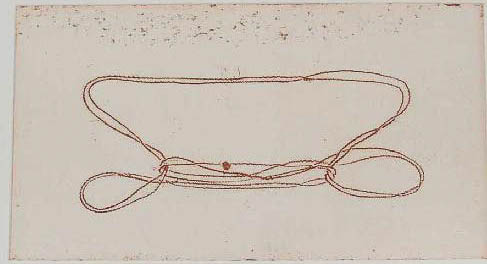
Gundimulk Wanambi, Lipalipa/Canoe, 2010.
Soft ground etching. Plate size: 22 x 40 cm.
Printmaker: Heather Burness, image courtesy Buku-Larrnggay Mulka Arts Centre
Further Reading
Barber, E. J. W. Women’s Work: the first 20,000 years. New York: Norton, 1994.
Buku-Larrnggay Mulka Art Centre: http://yirrkala.com/
International String Figure Association: http://www.isfa.org/
McCarthy, Frederick D. ‘The String Figures of Yirrkala’. In Records of the American and Australian Scientific Expedition to Arnhem Land, edited by C. P. Mountford. Vol. 2: Anthropology and Nutrition. Parkville, Vic.: Melbourne University Press, 1960: 415–511.
McCarthy, Frederick D. ‘String Figures of Australia’. The Australian Museum Magazine 12 (9), 1958: 279–83.
McKenzie, Robyn E. ‘The String Figures of Yirrkala: Examination of a Legacy’, in Martin Thomas and Margo Neale, Margo (eds.), Exploring the Legacy of the 1948 Arnhem Land Expedition, ANU E Press, Canberra, 2011, 191–212.
McKenzie, Robyn E. ‘The String Figures of Yirrkala’, in Glen Barkley and Michael Fitzgerald (eds.), String Theory: Focus on Contemporary Australian Art, MCA, Sydney, 2013, 20–22.
McKenzie, Robyn E. One continuous loop: making and meaning in the string figures of Yirrkala. PhD thesis. ANU. 2016.
Author
 Robyn McKenzie was born in the South Island of New Zealand, and now lives in Canberra, Australia. She is currently working at the Australian National University on an ARC-funded research project The Relational Museum and its Objects: Engaging Indigenous Australian Communities with their Distributed Collections (2016–2019)—a partnership between the ANU, the National Museum of Australia, the British Museum and a number of Indigenous organisations.
Robyn McKenzie was born in the South Island of New Zealand, and now lives in Canberra, Australia. She is currently working at the Australian National University on an ARC-funded research project The Relational Museum and its Objects: Engaging Indigenous Australian Communities with their Distributed Collections (2016–2019)—a partnership between the ANU, the National Museum of Australia, the British Museum and a number of Indigenous organisations.

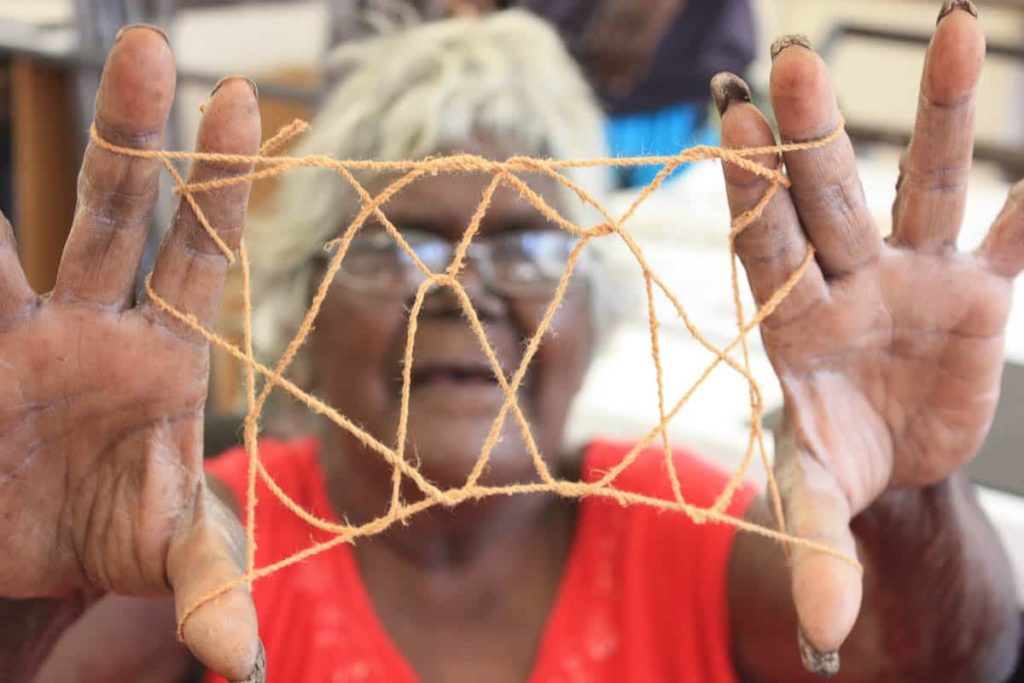
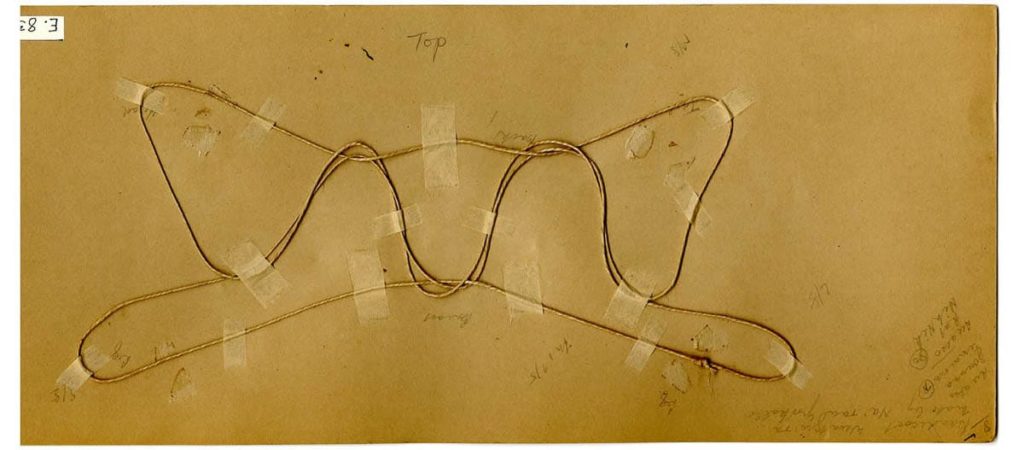
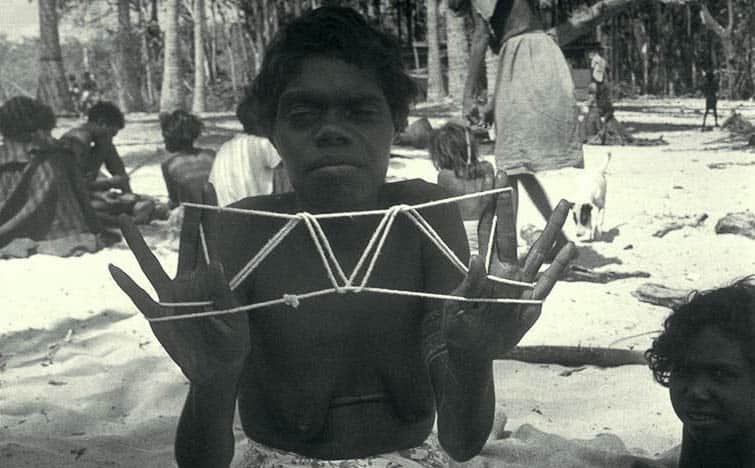
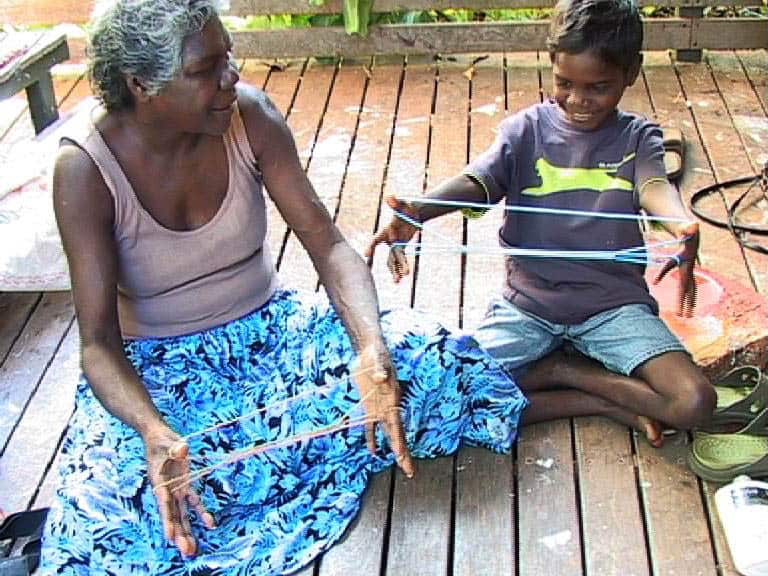

Comments
Really really loved this Robyn, thank you for sharing. Best Vicki